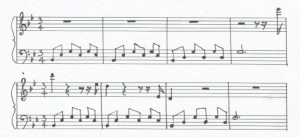When researching the role of music supervisor I came across a useful interview of a women who works as a music supervisor. The article itself was part of a careers advice campaign and asked Gemma her roles and responsibilities and also what she liked and disliked about the job. Gemma Dempsey has worked in the industry for 20 years and has worked on some oscar-winning films such as Danny Boyle’s ‘Shallow grave’. Gemma gave an explanation here of the music supervisor job role:
“A music supervisor is the person who coordinates all aspects of finding and placing music to a specific production (movie or TV programme, for example). This includes making suggestions for songs or tracks, researching songs that are available, liaising with the people who own the songs to ensure they can be used (this process is called ‘clearance’) and to make sure the right people get paid for their music being used. Music supervisors will also make sure the music is purchased within the right budget and that enough music is acquired to cover all the creative and production needs.”
I have found this explanation alone useful, I already knew the main responsibilities of a music supervisor however having this short paragraph has worked as a check list to see if I am fulfilling the role correctly. For my production I have achieved all of the examples she made: I created the music cues for the film, suggested a style and any tracks through liaising with the clients. I have then followed up with PRS – discussing the use of a sourced piece of music and finding other options. My role differs slightly as we do not have a budget for sound, however I have found it good practice looking into what research needs to happen when it comes to music. At the end of the interview she also gave some great advice about how to get involved and pursue a career within this role – which I am definitely interested in. She said the best way to get your name out there was through networking and contacting music supervisors who were involved in films you admired. She also said not to be shy and just ask if you can work for them to gain experience. This is something I will do after this project. It would also be great to see first hand how the job works and how it differs from what I have done within this term.
http://www.thebigmusicproject.co.uk/how-to-become-a-music-supervisor/
